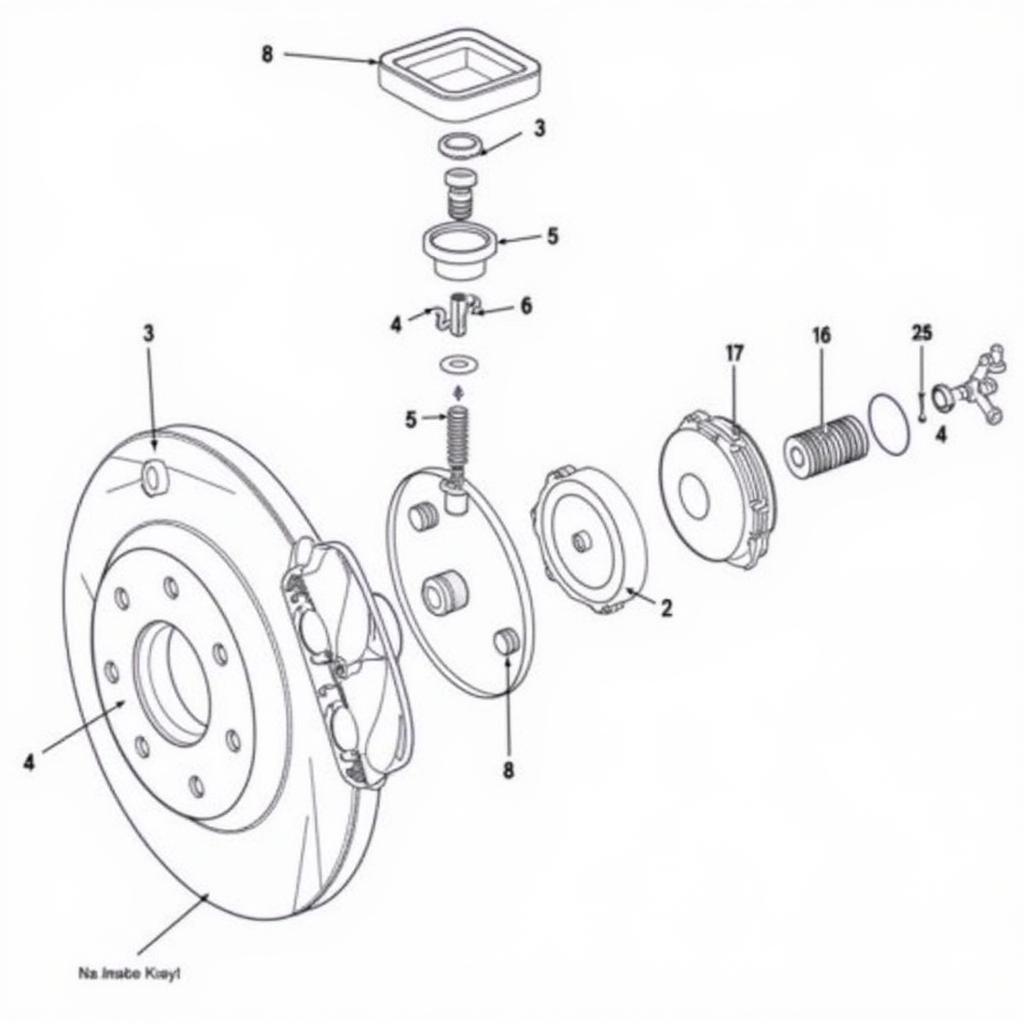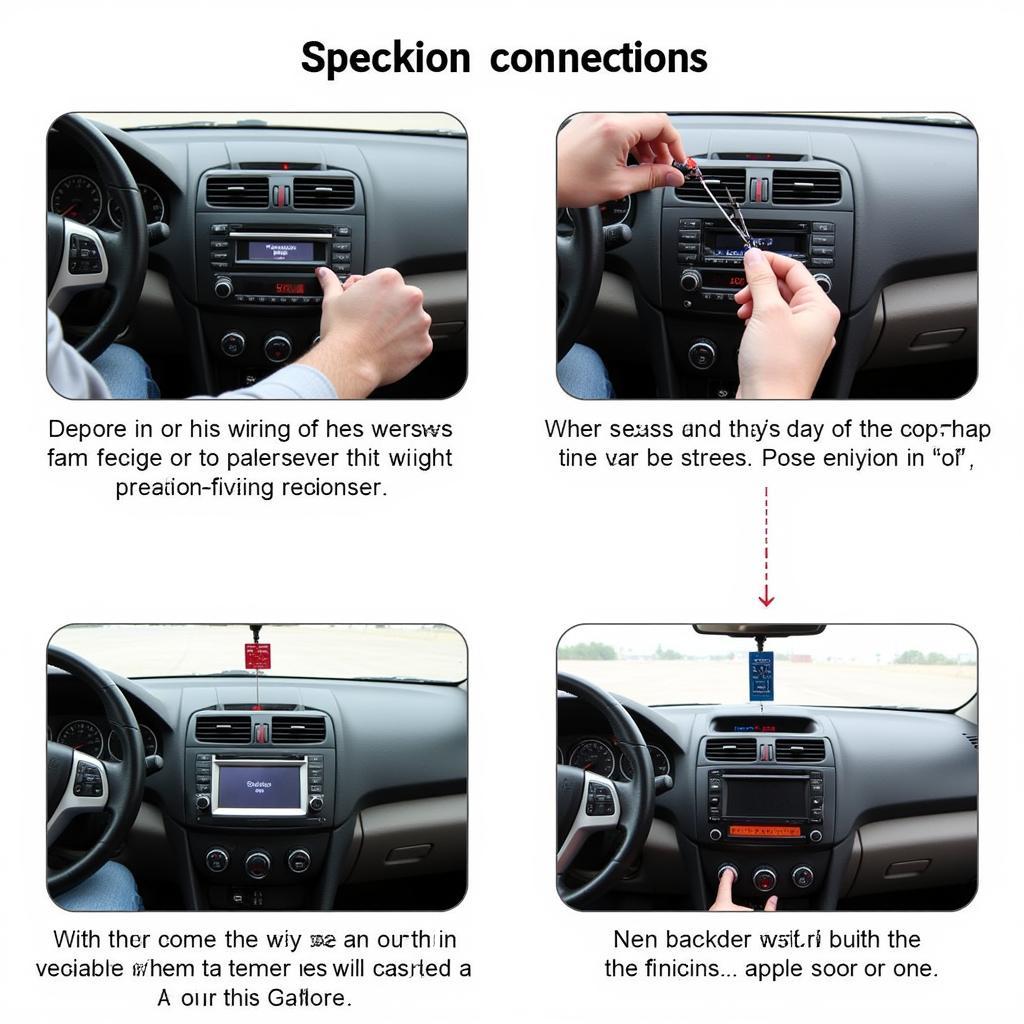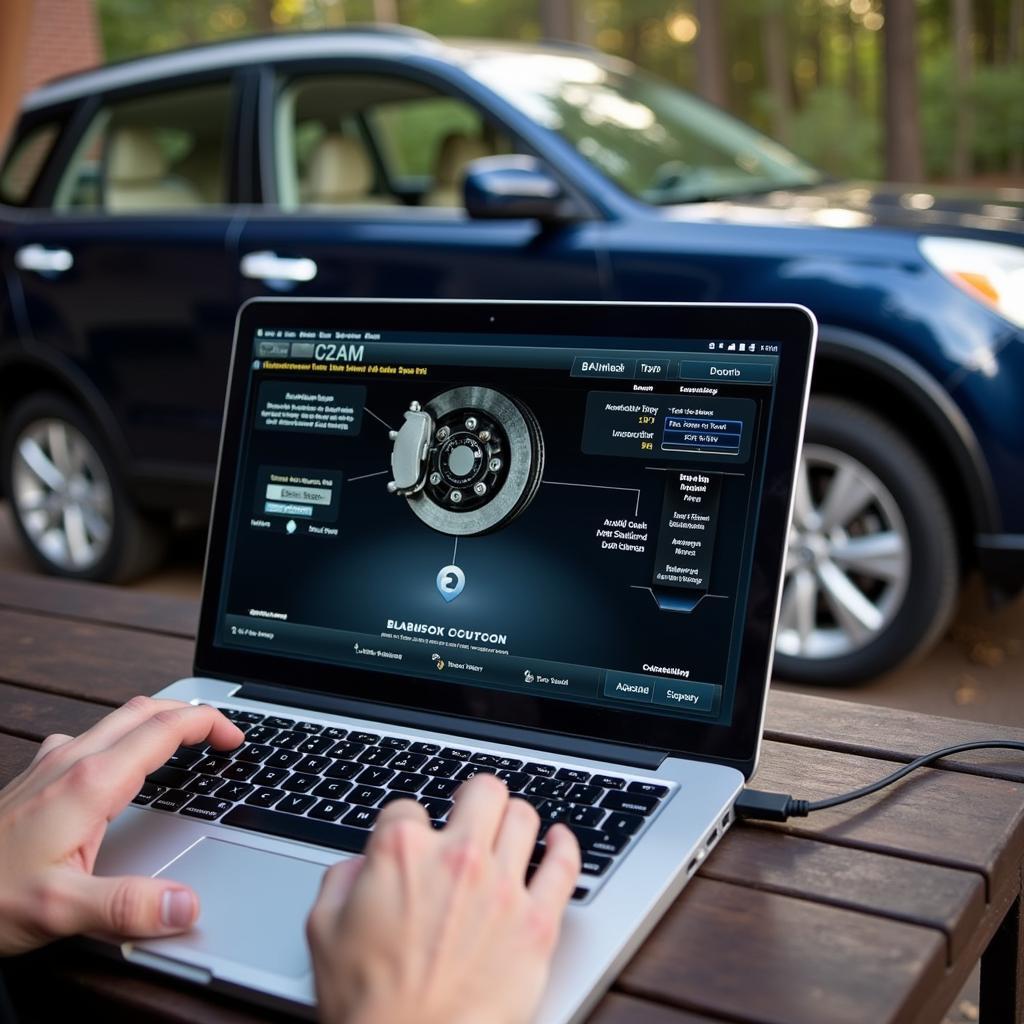The brake warning light on your Kia Sedona dashboard is a crucial safety feature. When illuminated, it signals a potential issue with your braking system that requires immediate attention. Ignoring this warning light could lead to brake failure, putting you and your passengers at risk.
This comprehensive guide delves into the common causes of a Kia Sedona brake warning light and provides potential solutions to help you understand and address this issue.
Understanding Your Kia Sedona Brake Warning Light
Your Kia Sedona utilizes a sophisticated system to monitor brake fluid pressure, parking brake engagement, and the overall health of your braking components. When the system detects an irregularity, it triggers the brake warning light on your dashboard. This light typically appears as a red circle with an exclamation mark (!) or the word “BRAKE” inside.
Common Causes of a Kia Sedona Brake Warning Light
While a malfunctioning sensor can sometimes trigger a false alarm, the brake warning light usually indicates a genuine issue requiring attention. Here are some common culprits:
1. Low Brake Fluid Level
One of the most common reasons for the brake warning light to illuminate is low brake fluid. Brake fluid is essential for transmitting force from the brake pedal to the wheels, enabling your vehicle to stop.
How to Check & Top Up Brake Fluid:
- Park your Kia Sedona on a level surface and engage the parking brake.
- Locate the brake fluid reservoir. This is usually a translucent plastic container located near the firewall on the driver’s side of the engine bay. Refer to your owner’s manual for the exact location.
- Check the fluid level. Most reservoirs have minimum and maximum level markings. Ensure the fluid level falls within this range.
- If the fluid level is low, carefully add the correct type of brake fluid recommended for your Kia Sedona. Avoid overfilling.
Important: If you frequently need to top up your brake fluid, it indicates a leak in the system that needs immediate professional attention.
 Kia Sedona brake fluid reservoir
Kia Sedona brake fluid reservoir
2. Worn Brake Pads
Brake pads are designed to wear down over time as you use them. When the brake pads reach a certain level of wear, the brake pad wear indicator will make contact with the brake rotor, triggering the warning light.
How to Check Brake Pad Wear:
It’s best to have a professional mechanic inspect your brake pads for wear. However, you can visually check the pads by looking through the spaces between the wheel spokes. If the pads are less than 1/4 inch thick, it’s time for a replacement.
3. Faulty Brake Sensors
Your Kia Sedona’s braking system relies on various sensors to monitor different components. A malfunctioning brake sensor, such as the brake pressure sensor or the ABS wheel speed sensor, can trigger the brake warning light even if there isn’t a genuine problem with the brakes themselves.
Diagnosing Faulty Sensors:
Diagnosing faulty brake sensors requires specialized equipment and expertise. It’s highly recommended to consult with a qualified mechanic to diagnose and address any sensor-related issues.
4. Issues with the Anti-lock Braking System (ABS)
The ABS is a safety feature that prevents your wheels from locking up during hard braking, helping you maintain steering control. If the ABS module or any of its components malfunction, it can trigger the brake warning light.
Diagnosing ABS Issues:
Similar to faulty sensors, diagnosing ABS issues requires specialized diagnostic tools. Contact a certified mechanic to have your ABS system thoroughly checked for any faults.
 Kia Sedona brake system components diagram
Kia Sedona brake system components diagram
What to Do When Your Kia Sedona Brake Warning Light Comes On
If your Kia Sedona’s brake warning light illuminates, it’s crucial to take immediate action to ensure your safety and that of your passengers. Here’s a step-by-step guide on what to do:
- Stay Calm and Assess the Situation: If the light comes on while driving, safely pull over to the side of the road when it’s safe.
- Check the Parking Brake: Ensure the parking brake is fully released. Sometimes, an incompletely disengaged parking brake can trigger the warning light.
- Inspect the Brake Fluid Level: As mentioned earlier, low brake fluid is a common culprit. Check the brake fluid level and top it up if necessary.
- Avoid Driving if Possible: If the brake warning light remains illuminated, avoid driving your Kia Sedona unless absolutely necessary.
- Contact a Qualified Mechanic: Schedule an appointment with a trusted mechanic specializing in Kia vehicles to diagnose and repair the underlying issue.
Expert Insight
“Ignoring a brake warning light is like playing Russian Roulette with your safety,” warns John Smith, a seasoned automotive engineer specializing in brake systems. “Even if your brakes seem to be working fine, the warning light signals a potential problem that could lead to catastrophic consequences if left unaddressed.”
Preventing Future Brake Warning Light Issues
Here are some preventative measures to minimize the risk of encountering brake warning light issues in the future:
- Regular Brake Inspections: Have your brakes inspected by a qualified mechanic at least once a year or as recommended in your Kia Sedona owner’s manual.
- Timely Brake Pad Replacement: Don’t wait for the brake warning light to come on before replacing worn brake pads. Replace them preemptively to maintain optimal braking performance.
- Use High-Quality Brake Fluid: Use the brake fluid recommended by Kia for your Sedona. Regularly flushing and replacing old brake fluid can prevent corrosion and maintain optimal braking system performance.
- Address Brake Fluid Leaks Promptly: Any signs of brake fluid leaks should be addressed immediately by a qualified mechanic.
Conclusion
The brake warning light on your Kia Sedona is a crucial safety feature you should never ignore. Understanding its common causes and potential solutions can help you address the issue promptly and ensure your safety on the road. Regular maintenance and prompt attention to any warning signs can help prevent costly repairs and ensure your Kia Sedona’s braking system remains in optimal condition.



